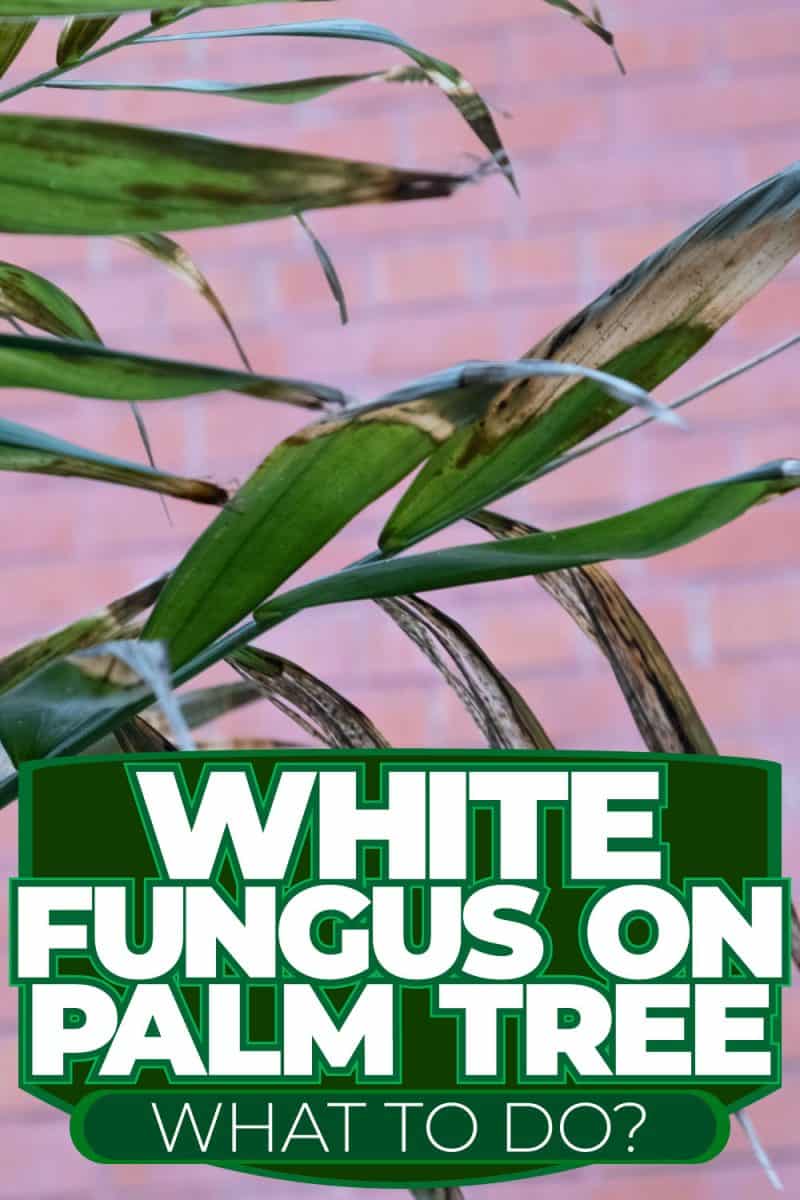White fungi come in various forms - white powdery mildew and mushrooms. Both can be detrimental to palm trees and any other plants, especially if left untreated. In this article, we have researched every aspect you need to know about white fungi and how to eradicate them.
To remove white fungus on palms, prune the infected parts of the tree and inspect the rest of the plant. Do not attempt to remove the growth by spraying since the spores are spread through water and air. For advanced infestation, apply a natural fungicide.
This article aims to assist you in resolving the issue regarding the appearance of white fungus on palm trees, the causes, preventive measures, and ways to eliminate them. Read on to find out more about this issue.
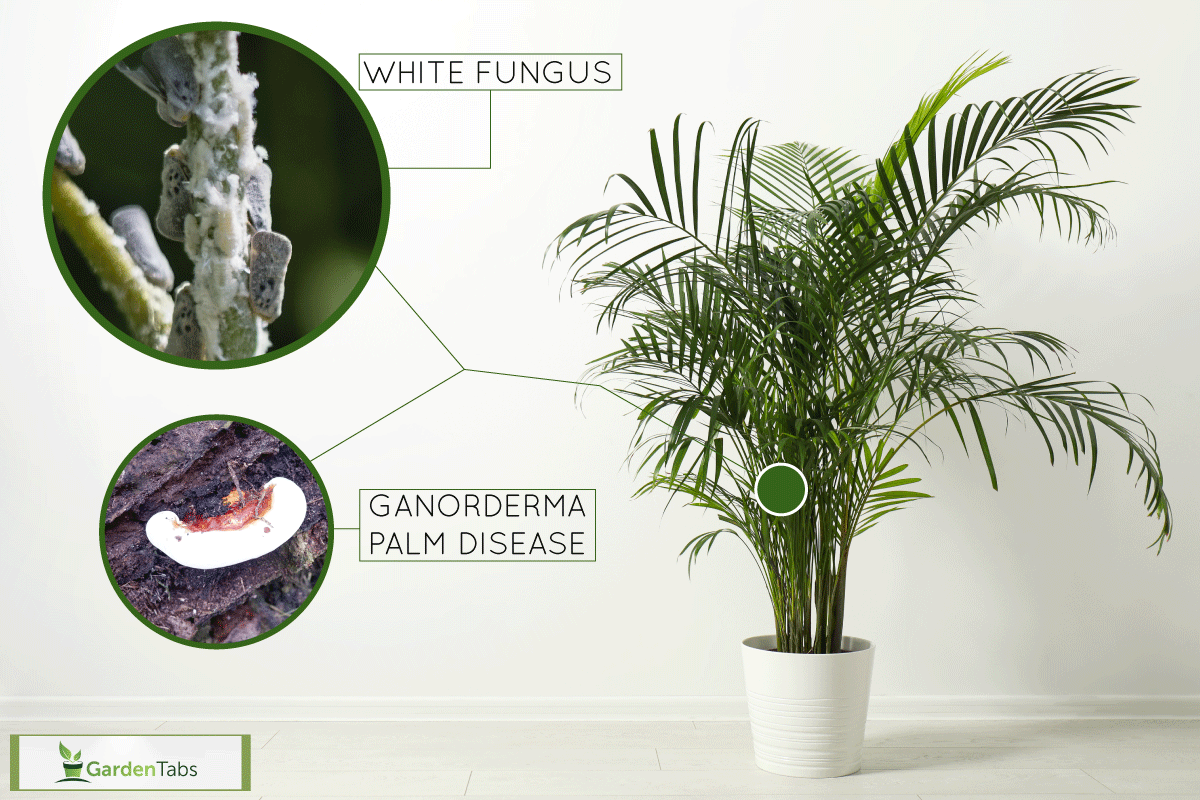
Palm Trees: An Overview
Palm trees are members of the family Arecaceae which usually thrive in tropical and subtropical areas across the globe. Because of its many uses, it has become economically important to humans throughout history. Palms provide food in the form of fruits and nuts, various oils and waxes, and sap which is fermented into wine and other edible byproducts.
Rattans are woven into baskets and turned into furniture, and some species yield fruit and oil, which have medical benefits. Palms are mainly cultivated and grown for ornamental purposes. They are a popular choice for indoor plants as well as landscape components.
Palm trees consist of thousands of species that are all prone to fungal infections. Each subclass has different immune resistance to various fungal diseases. The preservation of palms depends largely on the presence of fungi and their effects.

Fungi
Fungi are a group of spore-producing organisms that thrive and feed on organic matter. Molds, yeast, mushrooms, and toadstools fall under this category which differentiates them from plants and animals. Fungi are classified separately due to their unique and distinct biochemical and genetic structure.
Some species, such as truffles and mushrooms, are edible and are direct sources of food. Yeast is commonly used as a leavening agent for bread in the fermentation of alcohol into wine or beer.
Fungi do not undergo photosynthesis; they cannot manufacture their food. Parasitic in nature, they secrete digestive enzymes and absorb the dissolved material for sustenance and survival. Since fungi cause and rely solely on decayed medium, they are considered the primary decomposers in the ecosystem.
Plants become susceptible when the spores of parasitic fungi fall and attach to the leaves and stems. They reproduce rapidly and cause damage to the foliage, trunk, and root system at the onset of infestation.
White Fungi Or Ganoderma Palm Disease
Ganoderma is a tree trunk disease that is caused by a white fungus - also known as Ganoderma zonatum - that can actually kill palm trees. It appears or grows on the side of the trunk.
If you notice any soft and solid white circular mass, referred to as conks, present, it is the first sign that your tree has this specific kind of disease. Over time, it darkens into a brownish shade that produces spores that spread the Ganoderma in palms.
This fungus releases enzymes that will eventually degrade wood tissues located on the lower part of the trunk. All the leaves and the frond or branches will discolor and wilt while the tree is.
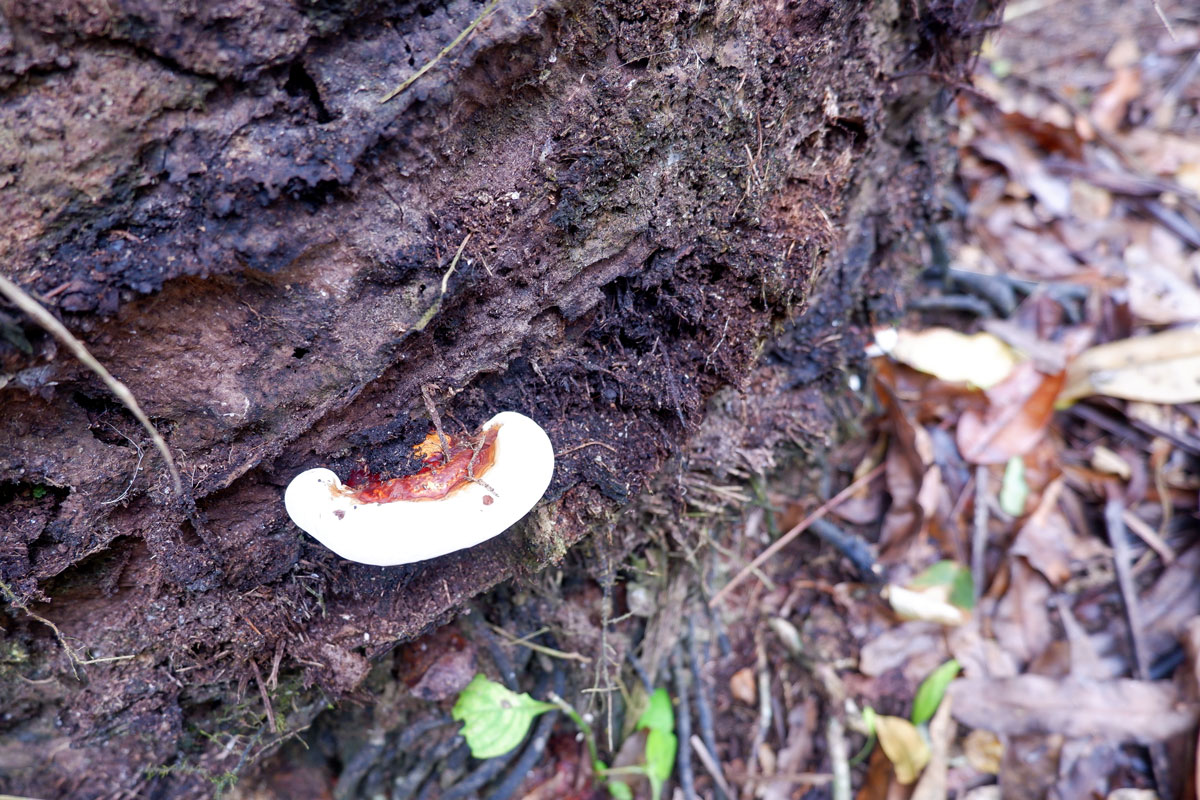
White Mold Or Powdery Mildew
Powdery mildews, as the name suggests, have a white cottony appearance and can be found mostly on the underside of leaves and stems of palm trees. It thrives in humid environments that have poor air circulation. Although it would not kill the plant, white mold can inhibit its growth and weaken its system.
This kind of fungus spreads rapidly through the air by attaching itself to the leaves, stems, and branches. Nearby plants can be affected; that is why you have to address the problem immediately.
To remove mildew, simply mix 1 teaspoon of baking soda and 1 liter of warm water. You can either remove the fungi manually by dipping a sponge and wiping the infected areas, or you can spray the leaves and let the substance sit for a while. You can also use an insecticidal soap.
Removing White Molds From Palms - What To Do?
When you notice your palm trees have white molds, you have to clean and prune the affected leaves immediately to prevent them from spreading through other parts of the plant.
Since molds thrive in moist environments, it is safer to water only the base of the tree. Avoid sprinkling or spraying the leaves because it enhances mold growth. You should also avoid overcrowding your palm trees. Proper air circulation is needed to lower humidity levels. This decreases the chances of white fungi from developing.
The easiest way to rid your palm trees of white mildew is by using a fungicide. You can buy from your local garden store or you can simply make your own spray solution at home. You can use neem oil, baking soda, milk, apple cider vinegar, and ginger oil. Spray the mixture on the infected areas.
Check out Bonide Fungicide on Amazon.


What Causes White Molds On Palms?
Pest Infestation is the main cause of white molds. Insects will feed on the sap or juices of the tree, resulting in the appearance of powdery mildews on the leaves and branches.
Mealybugs are white soft-bodied insects that thrive in damp and warm areas. These bugs use their mouths trying to pierce the surface of the leaves and feed on their sap. It can cause leaf discoloration, white molds, and curling.
Mealybugs are especially attracted to palm trees that contain high nitrogen contents (overfertilized), and those that are overwatered.
Spider mites do not classify as insects, but they are rather distinguished as a type of arachnid. They are reddish-brown and pale in appearance and have a size of only 1/50-inch.
Similar to mealybugs, these pests feed on the leaf tissues or juices of the tree and live on the underside of the leaves. They thrive in areas that have hot and dry environments.
To resolve the issue, manually dab the pests with cotton dipped in rubbing alcohol. You may also use 1 teaspoon of neem oil mixed with 1 gallon of water as a solution because this product contains antifeedant properties that ultimately affect pests that try to eat the leaves. Apply every 1 to 2 weeks until the infestation is resolved.
How To Care For Palm Trees?
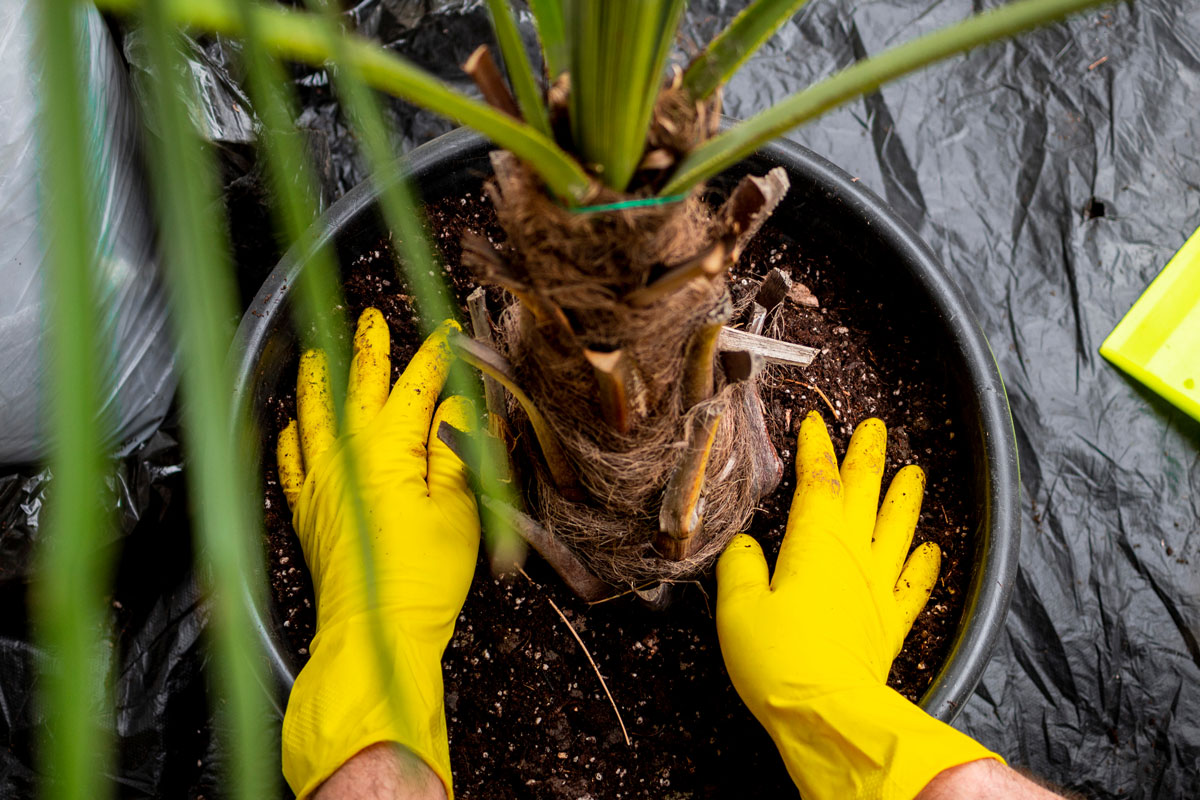
Palm trees require very little maintenance once they mature. Special care is needed for young or newly planted ones; here are the general guidelines.
Outdoors
Due to the palm trees' tropical nature, it grows and thrives in full sunlight. From the time of planting, it takes two to three months until they are established, meaning the roots have fully developed and anchored to the ground.
During this early period, water them fully twice a week, ideally during the evening to prevent the moisture from evaporating too rapidly.
Matured palms are resistant to drought and need to be watered once a month. To maintain moisture and regulate the temperature, especially during winter, you may add a sufficient layer of mulch or compost to the base of the tree. Slow-release fertilizers may be applied two to three times a year.
Indoors
Make sure your planting mix is moderately loose or porous so the water drains well. Most palm species prefer a humid atmosphere but drier soil conditions. Before watering your indoor palm, dip your finger about an inch and a half into the soil. If the layer is dry to the touch, you may proceed.
If the tips of the palm leaves turn brown, they need water. If it develops a yellow tinge, the soil is too moist. While outdoor palm trees tolerate sunlight well, some species prefer partially shaded locations.
Fertilize them during the active growth stage which is during the first three months from planting. Your palm has a high nitrogen requirement during this period.
Whether indoor or outdoor, it is natural for the foliage to turn yellow and discolor with age. It is advisable, however, not to prune the leaves until they turn brown and wilt. Though they may be unsightly, slightly discolored portions of the foliage still provide nutrients to your palm tree.
In Conclusion
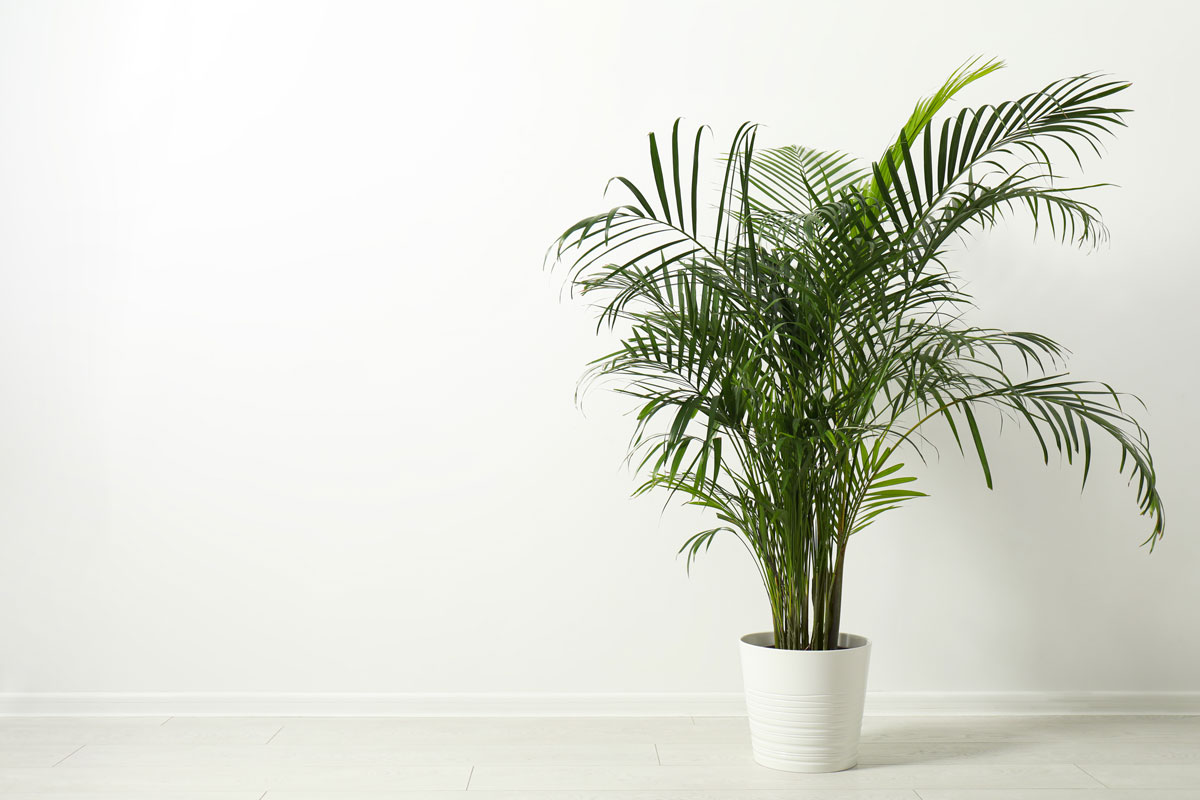
Apart from their aesthetic and ornamental appeal either as indoor or garden plants, palm trees are one of the most important sources of food, oil, wax, sap, and material. Like most growths, they are susceptible to parasite infestation such as fungi, insects, and microbes.
We hope the article provided enough information for you to identify the early signs of palm disease, how to control its spread, and preserve the tree. Check out our other related articles for more great info:
8 Beautiful Outdoor Potted Palms You Can Add To Your Home
How Tall Do Majesty Palms Grow Indoors?
